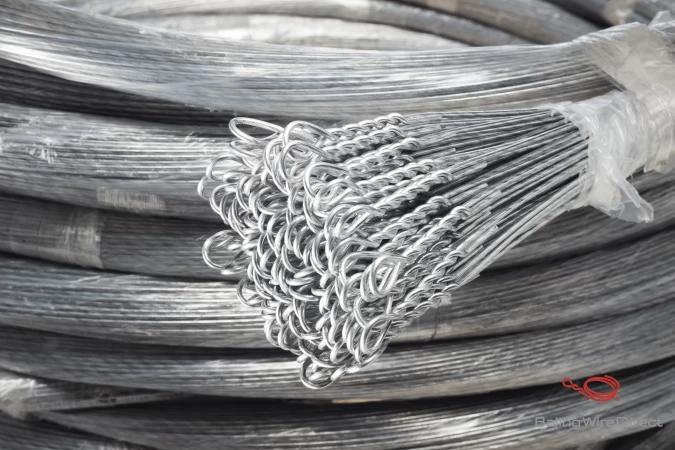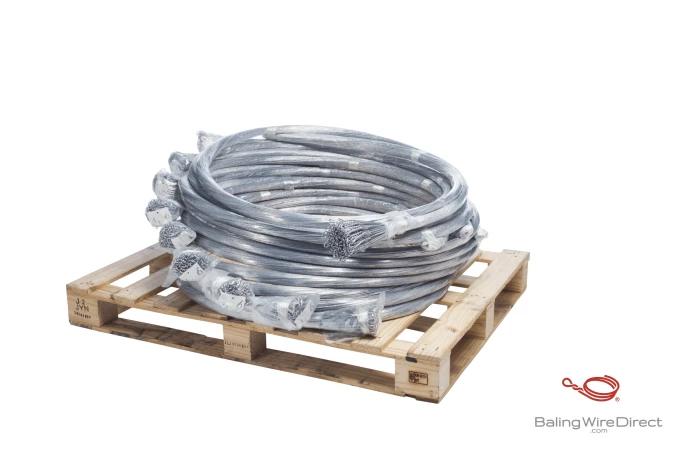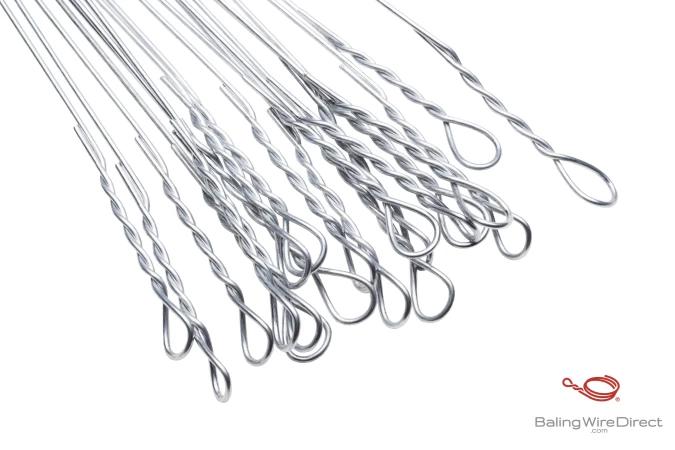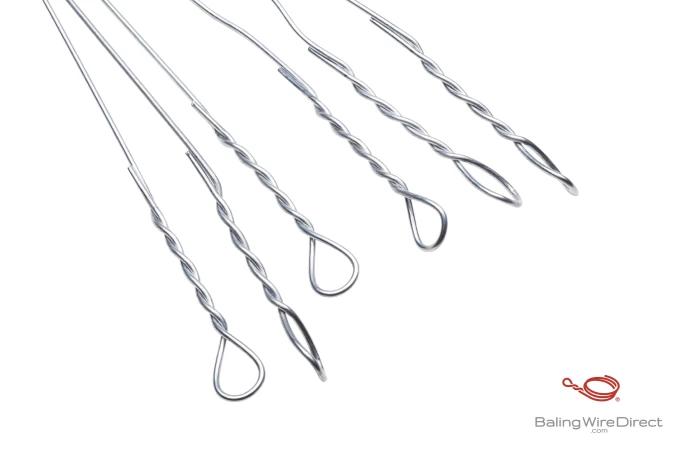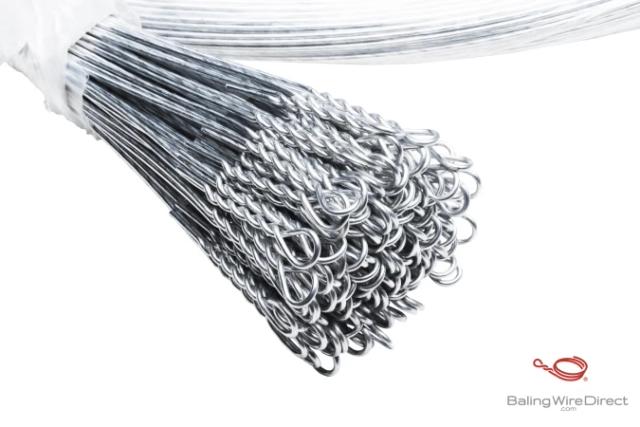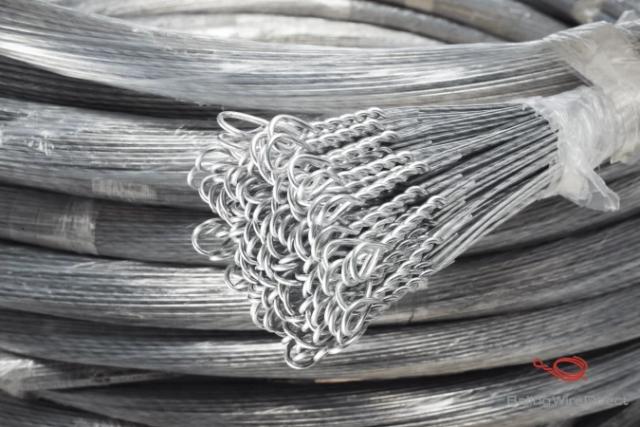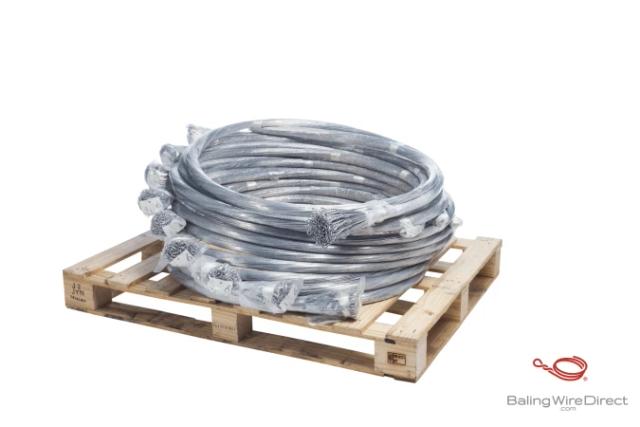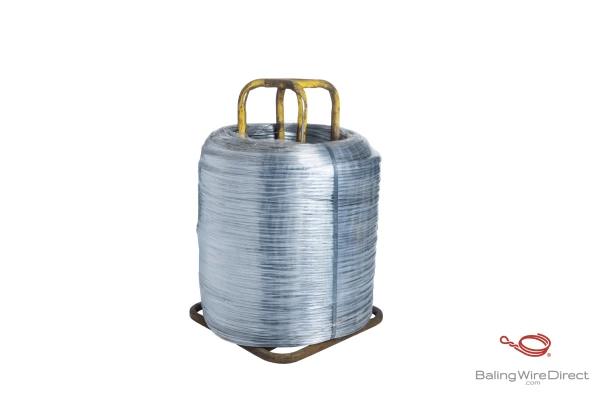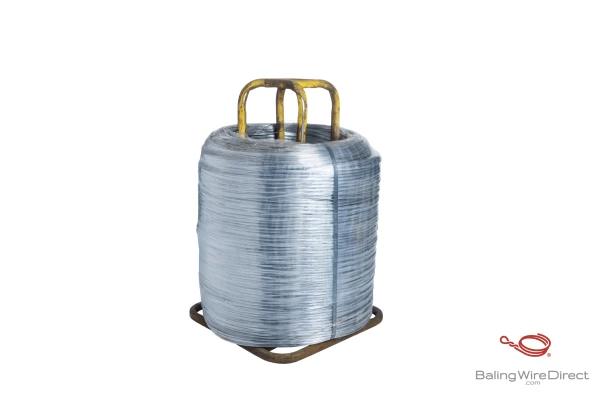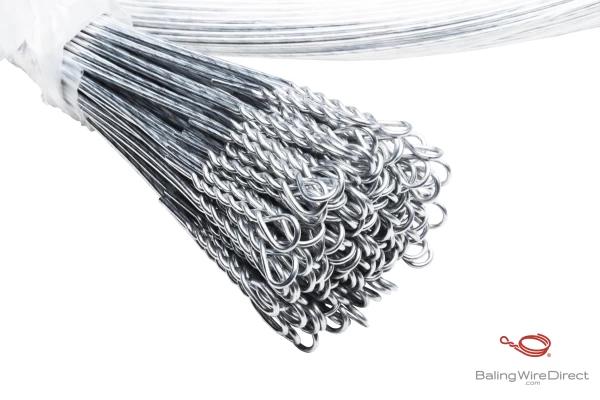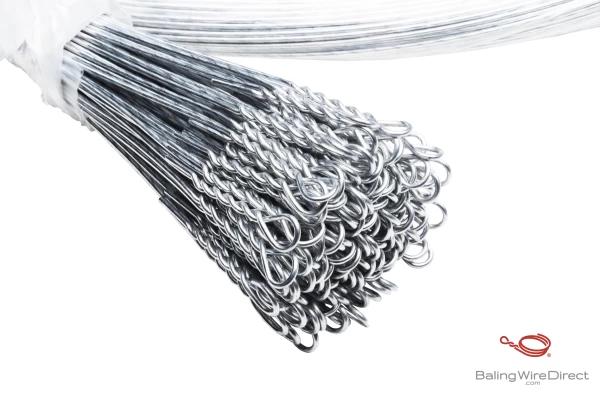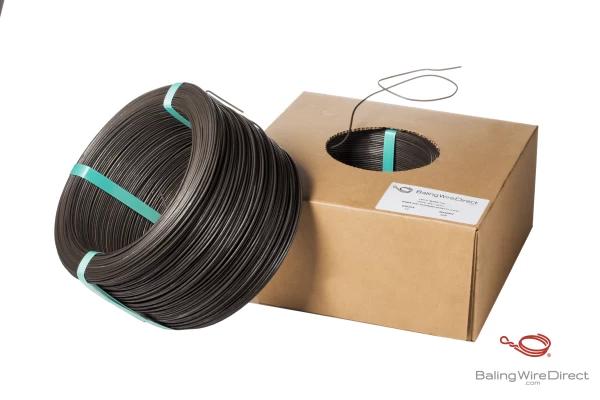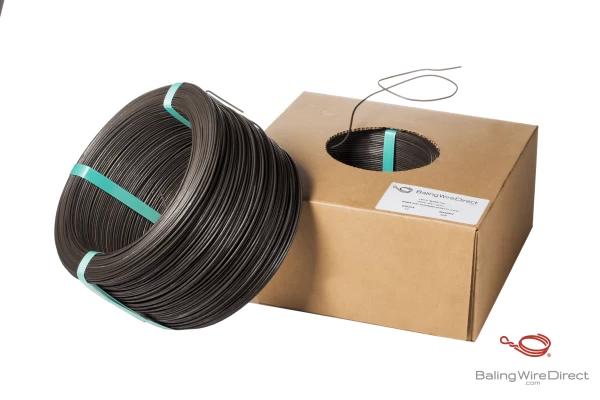12 Gauge Galvanized Single Loop Bale Ties
$83.40$91.74
LENGTH (FEET)
TIES PER BUNDLE
Add to cart to calculate freight
Product details
| Wire gauge | 12 Gauge |
| Load strength | 649 – 823 lbs. |
| Tensile strength | 75,000 – 95,000 psi (517.11 - 655 MPa) |
| Diameter (inch/mm) | Actual Size (.102" - .104") / (2.5908 mm - 2.6416 mm) |
Product specifications
Our 12 gauge galvanized single loop bale ties are workable yet strong, combining ductility with durability. Perfect for horizontal manual balers, and made in America to meet and exceed industry standards.
| Wire gauge | 12 Gauge |
| Load strength | 649 – 823 lbs. |
| Tensile strength | 75,000 – 95,000 psi (517.11 - 655 MPa) |
| Diameter (inch/mm) | Standard Wire Gauge or SWG (.105" / 2.946 mm) | Actual Size (.102" - .104") / (2.5908 mm - 2.6416 mm) |
| Elongation | 12% Min |
| Carbon grade | 1018 |
| Ties per bundle | 125, 250 |
| Custom lengths | 8' - 23' |
| Quality control | Extensive testing |
| Finish | Galvanized |
Wire tie use cases
Single loop bale ties are used to bale plastics, e-waste, cardboard, paper, textiles, and other compressible materials. A great choice for a variety of other applications as well, but especially suited for our customers in the recycling industry.
Commitment to Quality
Baling Wire Direct is one of North America’s leading baling wire manufacturers. As baling wire industry leaders, we guarantee premium quality products that undergo rigorous testing to meet the highest industry standards.
Our engineering focus and dedication to quality control ensure subpar wire gets removed from stock so that clients only receive high-quality baling wire. Our streamlined production and distribution network guarantees exceptional products, competitive prices, and outstanding customer support.
Our AutoShip™ system delivers live tracking status via SMS and email address to ensure a seamless purchasing experience. We offer timely delivery in only 1–3 business days and provide automated reordering, so our customers have a steady, reliable supply of the products they need.
American-made wire ties
We source the raw materials for our bale ties from select American family-run mills. Comprehensive material traceability documentation guarantees proper load capacity, tensile strength, and durability.
Our knowledgeable team of 120 staff and 5 onsite engineers closely monitor the manufacturing process to ensure the unwavering quality of our baling wire products.
It starts with a mechanical descaling process that eliminates harsh chemicals to prepare the wire's surface, reduce environmental impact, and maintain a safe workspace for our staff.
The wire is then passed through a bull-block wire-drawing machine, which allows for incremental wire diameter reductions and ensures optimal grain structure organization.
Next, the wire is air-cooled to produce a homogeneous microstructure that allows for consistent tensile strength
The result is a high-quality baling wire that is ready to take on the toughest conditions.
The galvanization process
Our galvanized wire undergoes a 7-step hot-dip galvanization:
- Surface preparation: first, the wire is cleaned to remove any impurities from the surface of the metal. This is important for ensuring proper adhesion of the zinc coating.
- Pickling: the wire is then immersed in an acid solution to remove any remaining oxides and scale. This process prepares the surface for galvanizing by creating a clean substrate.
- Fluxing: the wire is then immersed in a flux solution (zinc ammonium chloride), which helps to prevent oxidation and promotes a uniform application of the zinc coating.
- Galvanizing bath: next, the wire is dipped into a bath of molten zinc at a temperature of around 450°C (850° F).
- Alloy formation: while immersed in the molten zinc, a metallurgical reaction occurs between the iron in the wire and the zinc, resulting in the formation of a series of zinc-iron alloy layers. These provide excellent adhesion properties and corrosion resistance.
- Withdrawal: the wire is then slowly withdrawn from the zinc bath. The rate at which the withdrawal takes place is controlled to allow excess zinc to drain off and ensure the final product has an even coating.
- Quenching: the coated wire is then quenched in water or a quenching solution to cool it rapidly. This process solidifies the zinc coating and completes the galvanizing process.
The galvanizing process creates a durable and corrosion-resistant coating that increases the longevity of the wire.
After the wire is galvanized, we apply a coat of wax to the finished product. This creates a beautiful surface finish, further protects the wire, and ensures that it always feeds smoothly in automatic baling machines without leaving a mess.
Galvanization classes
We offer Class 1 and Class 3 galvanization. While Class 1 is more economical, Class 3 provides enhanced protection as it has a thicker, longer-lasting zinc coating:
- Class 1 galvanization: our class 1 galvanized wire offers a basic zinc coating that uses 0.28 ounces of zinc per square foot. Class 1 galvanized wire is cost-effective, it will typically rust in anywhere from 2–11 years, depending on the environment. In coastal areas, Class 1 coating fails even sooner due to saltwater corrosion.
- Class 3 galvanization: Baling Wire Direct also offers Class 3 zinc coating on all galvanized wire products. With 0.80 ounces of zinc per square foot, this premium galvanization is nearly 3 times thicker than Class 1. The robust coating is more resistant to corrosion, providing a lifespan of 13-30 years. Class 3 stands up to the demands of extensive use, heavy friction, and extreme environmental conditions.
Choosing a bright wire or a galvanized wire finish
Our wire ties come with either a bright finish or a galvanized finish. Both are effective for baling purposes, but their finish gives them different advantages.
Galvanized double loop ties are better when:
- The material baled is corrosive
- Bales will be stored in contact with the elements
Raw steel ties, or bright-finish wire ties, are uncoated. They are best when:
- The bales might expand (bright bale ties have more elasticity)
- Bales are being used in a retail setting, requiring a slightly nicer appearance
- Bales are stored away from the elements
- Budget is a priority
The specific requirements of the different baling applications will dictate whether galvanized or bright bale ties are the best option. The material being baled, environmental conditions, and the need for corrosion resistance should all be considered to make the perfect selection.
Other wire products we sell
Beyond annealed single loop bale ties, we sell a wide range of additional wire products including high-tensile wire, galvanized wire, and double loop bale ties.

